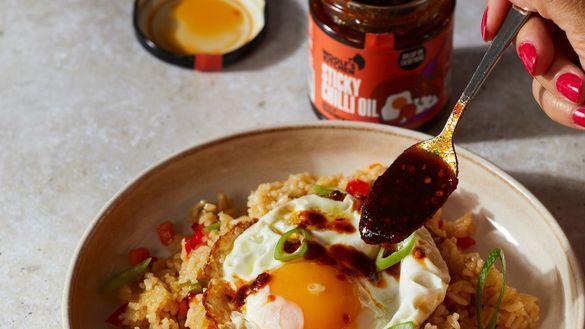(That's Food and Drink have written about Dominique Woolf, before. Please search for her name in our search bar.)
A Taste of Innovation
Dominique Woolf, the talented mastermind behind Woolf's Kitchen, is no stranger to the food industry. A passionate foodie with a flair for combining unique flavours, Woolf has carved out a niche for herself by offering a range of sauces and condiments that are as inventive as they are delicious.
Her products, inspired by her Thai heritage and a love for bold, vibrant flavours and tastes, have quickly become a favourite among those who appreciate quality and creativity in their cooking.
Woolf's Kitchen's offerings are far from ordinary. Each product is carefully crafted to deliver a punch of flavour, making it easy for even the busiest of cooks to whip up something extraordinary. The sauces and condiments are versatile, designed to complement a variety of dishes, whether you’re preparing a quick weekday meal or an elaborate weekend feast.
From Passion Project to Ocado’s Digital Shelves
Dominique Woolf’s journey from a passion project to a brand now featured on one of the UK’s leading online supermarkets is nothing short of inspiring. What began as a small-scale operation in her kitchen has grown into a successful business, thanks to her dedication to quality and her unwavering belief in her products.
Ocado’s decision to stock Woolf’s Kitchen is a testament to the brand’s growing reputation. Known for its curated selection of premium groceries, Ocado’s partnership with Woolf’s Kitchen is a match made in culinary heaven. Shoppers can now easily access Woolf’s Kitchen’s range of sauces and condiments, bringing a taste of innovation into their own homes.
A Bright Future Ahead
With this new chapter, Dominique Woolf is poised for even greater success. The Ocado launch is likely just the beginning of what promises to be an exciting journey for Woolf’s Kitchen. As more people discover the vibrant flavours and quality of her products, Woolf’s Kitchen is set to become a household name.
For those who have yet to experience the magic of Woolf’s Kitchen, now is the perfect time to explore. Whether you’re an experienced cook looking to experiment or simply someone who enjoys great food, Dominique Woolf’s creations offer something for everyone.
As Woolf’s Kitchen continues to grow, it will undoubtedly inspire more home cooks to elevate their dishes with a touch of creativity and a dash of boldness. The launch into Ocado.com is not just a milestone for the brand but a celebration of the endless possibilities that come when passion meets innovation.
So, what are you waiting for? Head over to Ocado.com and discover the delicious world of Woolf’s Kitchen.



.jpg)


.jpg)
.jpg)

.jpg)
.jpg)
.jpg)




.jpg)
.jpg)

